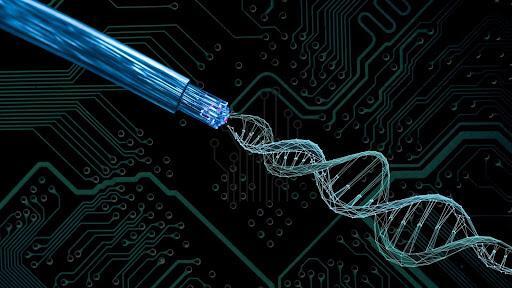
DNA’s Electron Flow May Unlock Future Biocompatible Electronics
The quest for innovative and sustainable electronics has led researchers to an unexpected discovery – the potential of DNA as a building block for future devices. By exploring the electrical properties of DNA, scientists have uncovered novel pathways for electron transport, which could pave the way for smaller, more efficient, and biocompatible electronics.
The recent study, published in the journal Nature Communications, sheds light on the intricate dance between electrons and molecular vibrations, or phonons, within DNA strands. This groundbreaking research has significant implications for the development of next-generation electronic devices that can seamlessly integrate with biological systems.
Understanding Electron Transport in DNA
DNA, the double-stranded helix containing the genetic instructions for life, is typically seen as a passive molecule. However, recent studies have revealed that DNA can exhibit electrical conductivity, albeit weakly. This phenomenon has sparked interest in harnessing DNA’s electrical properties for various applications, including bioelectronics and biosensing.
The latest research focuses on the interactions between electrons and phonons in DNA strands. Phonons are quantized packages of vibrational energy that flow through the molecule, influencing the movement of electrons. By studying these interactions, scientists have discovered that phonons can create novel pathways for electron transport, bypassing traditional conductive channels.
Electron-Vibration Dynamics in DNA
The researchers used advanced computational models and simulations to investigate the dynamics of electron-phonon interactions in DNA. They found that the vibrations of the DNA molecule, particularly the twisting and bending of the helix, play a crucial role in facilitating electron transport.
The study reveals that electrons can jump from one DNA strand to another through the phonon-assisted mechanism, creating a network of conductive pathways. This phenomenon is known as phonon-assisted electron tunneling (PAET). PAET enables electrons to traverse the DNA molecule with greater efficiency, potentially leading to the development of more robust and reliable DNA-based electronic devices.
Implications for Biocompatible Electronics
The discovery of PAET in DNA has significant implications for the development of biocompatible electronics. Traditional electronic devices are often incompatible with biological systems due to their size, material composition, and energy requirements. However, DNA-based electronics could potentially overcome these limitations, enabling the creation of smaller, more efficient, and biocompatible devices.
Imagine a future where implantable devices, such as pacemakers or neural prosthetics, can be designed using DNA-based electronics. These devices would be able to seamlessly integrate with biological systems, reducing the risk of rejection and improving their overall performance.
Challenges and Future Directions
While the discovery of PAET in DNA is a significant breakthrough, several challenges lie ahead. Further research is needed to fully understand the mechanisms underlying electron-vibration dynamics in DNA and to develop practical applications for DNA-based electronics.
Some of the key challenges include:
- Scaling up the technology: Currently, DNA-based electronics are limited to small-scale devices. Scaling up the technology to create larger, more complex devices will require significant advances in DNA synthesis, assembly, and processing.
- Improving conductivity: While PAET enables electron transport in DNA, the conductivity is still relatively low compared to traditional materials. Researchers will need to develop strategies to enhance conductivity and reduce energy losses.
- Integrating DNA-based devices with biological systems: Successfully integrating DNA-based devices with biological systems will require a deep understanding of the interactions between DNA and biological molecules.
Conclusion
The discovery of PAET in DNA has opened up new avenues for the development of biocompatible electronics. By leveraging DNA’s unique electron-vibration dynamics, researchers can create smaller, more efficient, and biocompatible devices that can seamlessly integrate with biological systems.
As we continue to push the boundaries of DNA-based electronics, we can expect to see significant advances in the coming years. With the potential to revolutionize the field of bioelectronics, this research holds the key to unlocking a new era of innovation and discovery.
Source:






